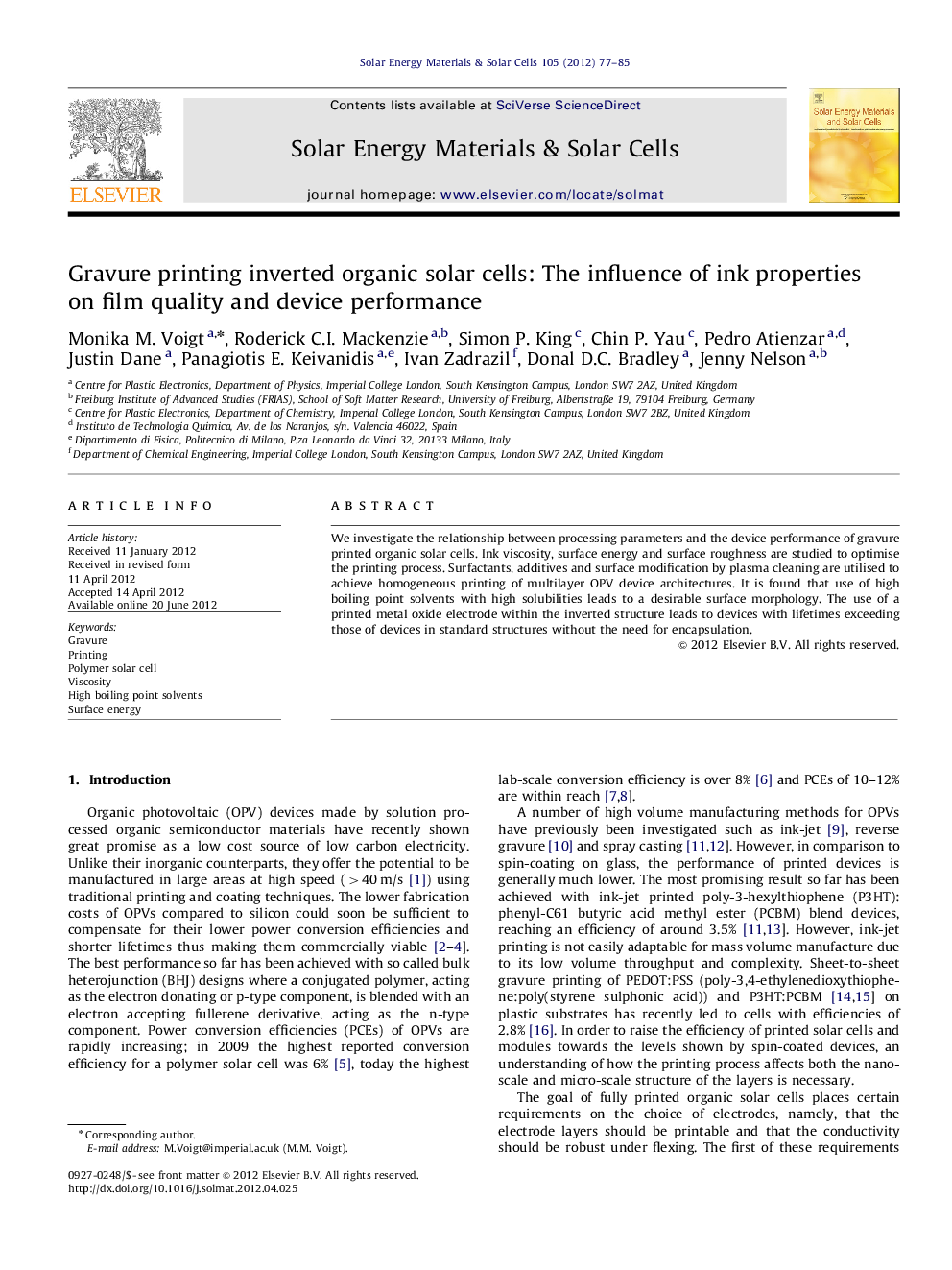| Article ID | Journal | Published Year | Pages | File Type |
|---|---|---|---|---|
| 78949 | Solar Energy Materials and Solar Cells | 2012 | 9 Pages |
We investigate the relationship between processing parameters and the device performance of gravure printed organic solar cells. Ink viscosity, surface energy and surface roughness are studied to optimise the printing process. Surfactants, additives and surface modification by plasma cleaning are utilised to achieve homogeneous printing of multilayer OPV device architectures. It is found that use of high boiling point solvents with high solubilities leads to a desirable surface morphology. The use of a printed metal oxide electrode within the inverted structure leads to devices with lifetimes exceeding those of devices in standard structures without the need for encapsulation.
► The link between solvent choice and organic semiconductor printability is studied. ► A link is established between ink parameters and printed device performance. ► The influence of surfactants and additives on printability is studied. ► A printed metal oxide electrode leads to inverted devices with long lifetimes.
